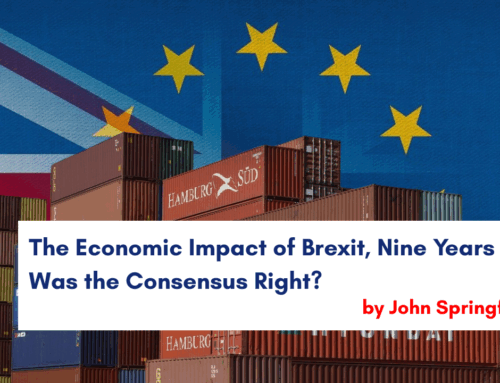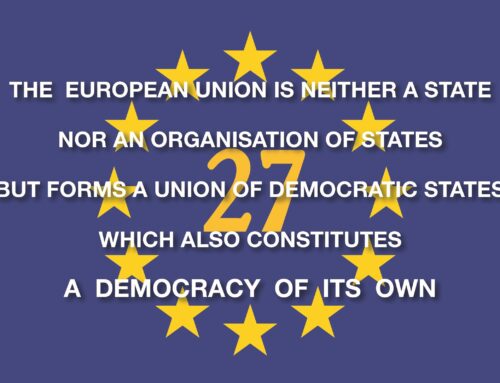The European Commission has launched a Communication, on Energy System Integration (ESI) and Hydrogen strategies, as part of its framework for a climate-neutral Europe by 2050. Along with the introduction of a proposed EU Climate Law enshrining the EU’s commitment to greenhouse emissions neutrality by that date, these two new strategies are among the first steps towards the ambitious programme of environmental legislation (the “Green Deal”) that Commission President Ursula von der Leyen has described as “Europe’s man on the moon moment”.
The European Green Deal
The Commission’s ESI and Hydrogen strategies are part of the EU’s Green Deal “the Green Deal”. The ambitious project can be summed up as the EU’s visionary program in promoting Europe to become a world leader in combating climate change. Its founder and prime sponsor has been von der Leyen on whom there are heightened public expectations for her to lead the EU in achieving substantive progress during the United Nations’ COP26 meeting in Glasgow, UK, at the end of 2020.
The Green Deal’s overall plan is to raise the EU’s 2030 greenhouse gas emissions reduction target up to at least 50%, or even 55%, from 1990 levels. This medium-term objective will be achieved in accordance with a comprehensive road map of actions to be taken at the EU and member state levels. The Commission has stressed that the ambitious target, which goes beyond the initially-proposed 40% reduction in greenhouse emissions, will be fulfilled in a measured way, but one that is considered essential in Europe becoming climate-neutral by 2050.
In achieving the environmental objectives, there will be significant consequences for business and investment players operating across the EU’s internal market. There will also be extensive impacts on non-EU countries and their exporters trading with the Single Market. Even so, investment into tackling climate change will be of a record-breaking amount for the EU or indeed any global economy. This would include an estimated €260 billion in additional annual investment for current 2030 climate and energy targets. About a quarter of the EU’s long term 2021-2027 budget, to be discussed by EU heads of state European Council meeting, in July 2020, is expected for climate action measures.
Energy System Integration
The ESI strategy puts forward several policies and legislative actions at the EU level. The proposed measures are anticipated to provide the required scope and speed in implementing the EU’s 2018 Clean Energy Package, which sets out the groundwork for energy system integration. Notably, the ESI is not expected to serve as a one-size-fits-all model, regardless of the shared objective in achieving climate neutrality by 2050. Instead, EU member states will be empowered to follow individual routes to formulate national rules in line with their unique circumstances and policy choices inherent within each member state’s energy and climate plans.
The ESI strategy identifies three key areas for coordinated measures to address existing barriers for energy system integration. These include three principal pillars including extended direct electrification of end users, a more circular economic system incorporating energy efficiency, and the promotion of clean fuels involving sustainable biofuels and renewable hydrogen.
In more detail, the first of these includes the application of an energy-efficiency first principle consistently, across the entire EU energy system, when employing EU and national legislation by 2021. This involves enabling priority to demand-side solutions whenever more cost-effective than investments in energy supply infrastructure in fulfilling policy aims.
The Energy Efficiency Directive and Energy Performance Buildings Directive currently provide incentives for end-users, but not sufficiently for the full supply chain. In this context, the Primary Energy Factor “PEF” will be a key tool to allow comparisons of savings across energy carriers. Since most renewables are wholly efficient with low PEF, this should reflect the real savings enabled by renewable electricity and heat. The Commission will review the level of PEF and determine whether the existing provisions in EU legislation ensure adequate application of PEF by member states.
The upcoming “Renovation Wave” initiative, forming part of the Green Deal, will also propose concrete actions to accelerate the uptake of energy and resource efficiency measures and of renewables in buildings across the EU in the near future.
The second pillar of the ESI will be to ensure that local energy sources are neither insufficiently nor ineffectively used in buildings throughout communities. The ESI will include the construction of a more circular energy system to support the reuse of waste heat from industrial sites and data centres. This would be achieved through upgraded connections to district heating networks, energy performance accounting and contractual frameworks. These measures also fall to be part of the upcoming revision of the Renewable Energy Directive and Energy Efficiency Directive.
Under the third pillar, a key ESI strategy will involve mobilizing biological waste and residues from agriculture, food and forestry sectors towards bio-energy production including biogas. Applying the principle of circularity in line with the EU’s new Circular Economy Action Plan and associated waste legislation; sustainable agriculture and forestry management systems could result in increased sustainable production of bioenergy from wastewater, waste and residues. For instance, in agriculture, through the Common Agriculture Policy, Structural Funds and the new LIFE program, from 2021 onwards, farmers could be incentivised to contribute to greater utilisation of sustainable biomass for energy.
The ESI strategy also spells out a wide variety of specific measures which largely fall under the following general points:
- promoting renewable and low carbon fuels for hard-to-decarbonize sectors;
- accelerating the electrification of energy demand by building a largely renewable-based power system;
- making energy markets fit for decarbonisation and distributed reserves;
- enabling a more integrated energy infrastructure; and
- formulating a digitalised energy system and supportive innovation framework.
Since the EU imports nearly 60% of its energy requirements, in the form of hydrocarbons, the ESI strategy should support in facilitating the process of decreasing dependence on fossil fuel imports. The ESI strategy should also enable energy savings and greater reliance on domestic renewable sources and cleaner energy carriers. However, one of the criticisms of the strategy has been its overweight focus on the application of future technologies for decarbonisation. Not enough emphasis has been placed on current decarbonisation facilitation including in the area of renewable biogas. Another drawback to the strategy’s actual implementation may be the exclusion of specific targets for renewable energy use in relation to final consumption, particularly for the key dates of 2030 and 2050.
Hydrogen strategy
The EU’s strategy in this renewable area introduces measures to create the conditions for hydrogen to be a cost-effective decarboniser of the economy. At present, hydrogen contributes to less than 2% of Europe’s energy consumption. The priority for the EU is to develop hydrogen production from renewable electricity as the cleanest solution.
In addition to providing financial support in certain end-use applications, the Commission will consider setting minimum shares or quotas of renewable hydrogen in specific end-use sectors such as in the aviation and maritime industries through revision of the Renewable Energy Directive.
The Commission will also introduce a comprehensive terminology and European certification system covering all renewable and low carbon fuels. The system, based on full life cycle greenhouse gas emission savings and sustainability criteria, will build on existing EU legal provisions, including the Renewable Energy Directive.
The strategy will also focus on hydrogen’s transportation and storage, alongside its production. This will entail a three-stage process including construction of upto 6GW of renewable hydrogen capacity from 2020 to 2024. This would rise upto 40GW over 2025 to 2030. For 2030 to 2050 the emphasis will be on a fully developed hydrogen economy and a trans-European hydrogen network. Since natural gas consumption is anticipated to fall, from 2030 onwards, any redundant gas transportation networks may alternatively be used for the distribution of hydrogen on both an intra and inter member state basis.
The ESI strategy also refers to hydrogen infrastructure as a key component of an integrated EU energy network. The objective will be to maximise the application of existing infrastructure while avoiding both lock-in effects and stranded assets. Infrastructure planning will facilitate integration of various energy carriers and arbitrate between the development of new infrastructure or repurposing of existing networks. The strategy will also consider alternatives to network-based options, especially demand-side solutions and storage.
One of the reported drawbacks to the EU’s Hydrogen Strategy is that its singular attention to renewable hydrogen, based on wind and solar sources, could mean insufficient levels of energy production at certain times. A more balanced alternative could be utilizing carbon-derived hydrogen together with alternative process technologies such as carbon capture and storage “CCS” as a means of achieving a climate-neutral energy system. Thus, CCS can also be harnessed to address hard-to-abate emissions in certain industrial processes, thereby enabling traditionally-polluting industries to have a place in a climate-neutral economy alongside maintaining industrial jobs across Europe.
Conclusion
As part of the broader Green Deal, the ESI and Hydrogen strategies have been designed for environmentally sustainable economic growth that should also be equitable and inclusive for a wide spectrum of European society as stakeholders. The strategies should also become a vital building block in supporting Europe’s economic recovery in the wake of the COVID-19 pandemic. For that purpose alone, the new plans for Europe-wide energy system integration and clean power sources should raise the scale of economic resilience over the long term.






